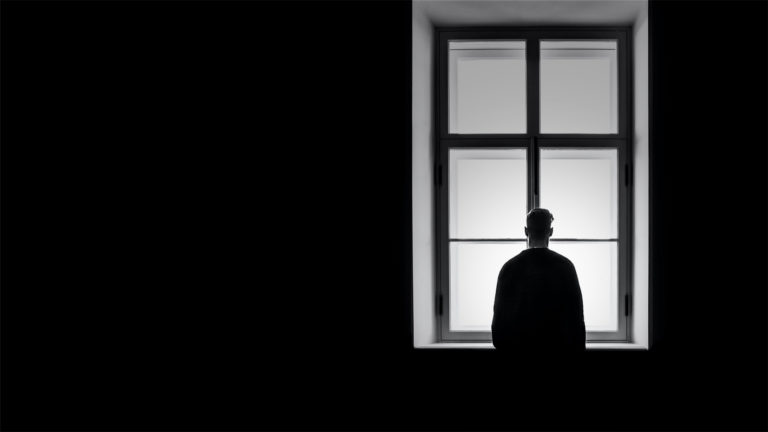Our homes have quite literally been the only shelter we have from this current atmosphere filled with fear, anxiety and uncertainty. But this new microscopic focus on home is also forcing us to notice where it’s falling short. But what’s lacking? And could this lead to any future-proofing actions when it comes to our houses?
“Home is a shelter from storms – all sorts of storms.” – William J. Bennett
To our generation, this pandemic feels like the storm to end all storms. And our homes have quite literally been the only shelter we have from this atmosphere filled with fear, anxiety and uncertainty. However, this new microscopic focus on home is also forcing us to notice where it’s falling short.
The pandemic has brought about a loss of stability at home
The Sound has been fascinated with the concept of “Home”, and we’ve done extensive research into it. One of the things we uncovered was that ‘Home’ gives us a sense of stability – it is both literally and metaphorically “a place where we feel safe and secure with others”. However, the last few months have changed our definitions of what a shelter is and what dangers lie outside. This in turn has changed what makes us feel safe and secure.
So, how will people future-proof their homes?
When thinking about “future-proofing home,” my mind went straight to all the futuristic goodies we hear about: voice controlled smart doors, no-touch UV disinfectants, VR music festivals and robotic vacuums (I know this last one isn’t futuristic, but I really want one right now).
Realistically though, these high-tech solutions will take a while to manifest into people’s daily lives. Instead, there are more accessible changes we can expect people to make in the near future:
Self-sustaining Homes
Our homes don’t feel self-sufficient in their current state. It feels like there are a million things we need to account for moving forward:
What if grocery stores run out of vegetables or meat before we get there? What if we can’t get to the gym or go to a movie theatre? And what if we run out of toilet paper? This new distrust in reliable supply chains dictates the need for a “back up plan”, which is already affecting purchase behaviours. A few things we’re seeing:
- Increase in home gardens, which ensure not only a guaranteed supply of food but also that dose of greenery we are all craving while stuck inside
- Making our homes self-contained entertainment units, whether it’s having beauty treatments at home, investing your hobbies or buying that really comfy recliner
- Creating a self-sustaining environment, be it in terms of energy (inverters, solar panels) or storage (freezers, rain barrels)
We can see this desire to create self-sustaining homes reflected in the retail categories that are trending upwards compared to same time last year, according to Google:

Flexible Homes
With our homes having to potentially take on multiple roles (work, party AND relaxation), there is a desire to utilise both products and the physical space around us efficiently to maximise what we get out of our homes. Early indicators tell us it could look a little something like this:
- Products with multiple functions that enable these various roles may become desirable e.g. a bed that folds into a couch to give you exercise space, work tables that fold back into a coffee table, or this 6-in-1 kitchen utensil
- Lack of storage spaces for all these new things may encourage splurging on products that look good and become part of the overall home aesthetic e.g. the world’s thinnest treadmill, this stylish bar gym+decoration hanger or this sleek smart mirror!
- People will want to use their physical space smartly. Every room will have multiple uses and anything enabling seamless switching will conquer e.g. having the dining room switch from ‘work mode’ to ‘dinner mode’ or even fitting in an inflatable pool for ‘kids mode’. Similarly, designs, products and tech that enable “flex-spaces” (tiny alcoves where you can retreat to make work/private calls in an otherwise open space) may be in demand.
This new need to have multi-functional homes is again clear when you look at Google’s trending retail categories in comparison to same time last year:

But will this change once lockdown is over?
There have been numerous studies [1] [2] [3] outlining not only the immediate psychological impact of this pandemic, but also the possibility of permanent behaviour changes after this “collective trauma” our society has gone through.
Some psychologists[4] even suggest that events like this affect a society’s outlook in a way similar to PTSD, which could be passed on intergenerationally to the behaviours of children growing up right now. This could potentially seep into our demands from our home and lead to immediate future-proof-ing actions as well as a long term shift in what people desire from their houses.
What can brands do?
Stability is an evergreen facet of home that people will always try to uphold, but right now there is an amplified need for it. Brands can help people foster stability through future-proofing by:
- Researching consumers’ evolving motivations as it relates to achieving stability via their home environment
- Identifying the intersection between these motivations and what your brand can credibly do to address them, thinking in terms of both strategy and innovation
- Exploring multifunctional products where relevant; now more than ever, the appetite for flexible and hardworking solutions is on the rise
- Optimise for “mental multifunctionality” by helping people redefine spaces to more readily them switch from work mode to play mode within the same space
Read more about our work on Home here.


